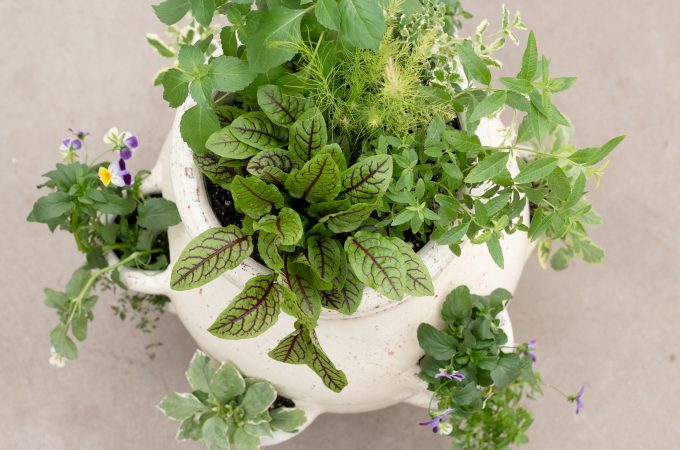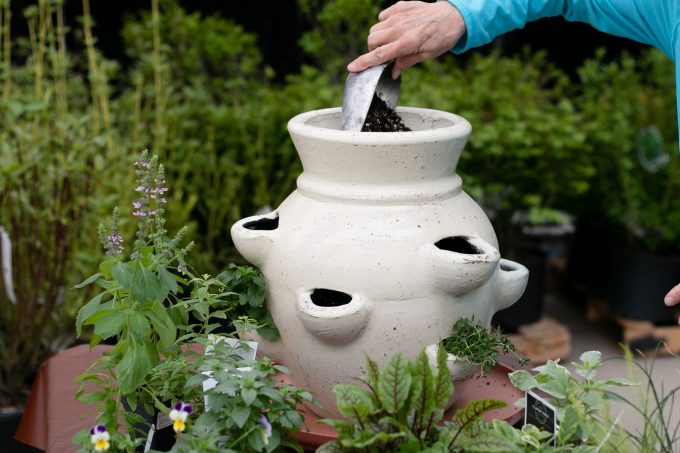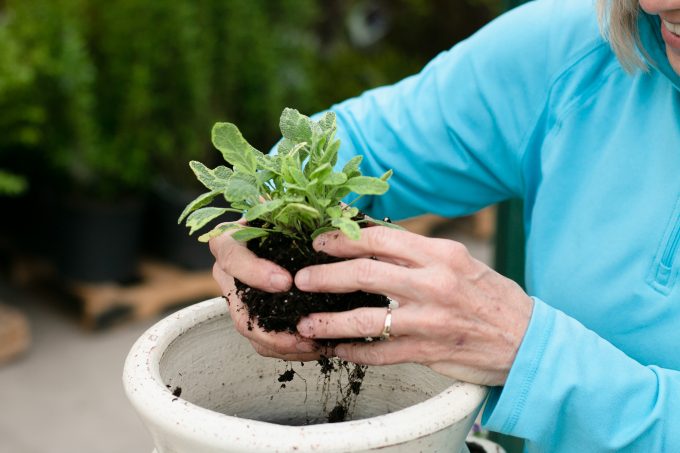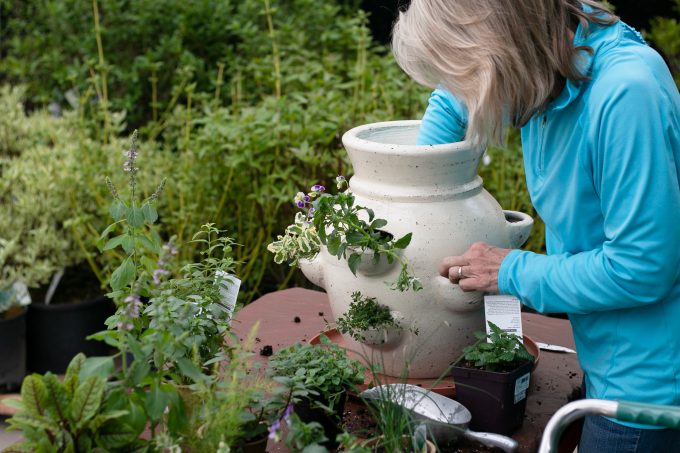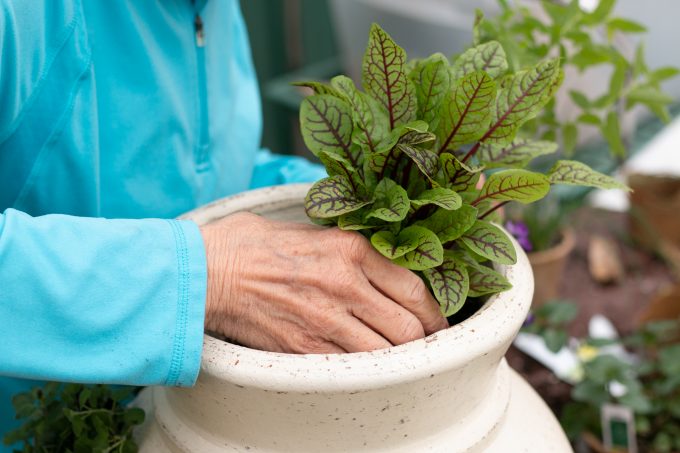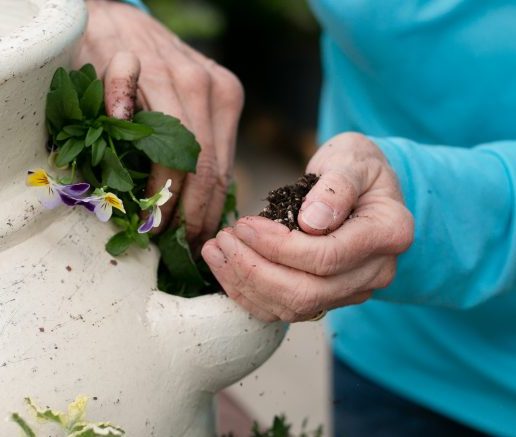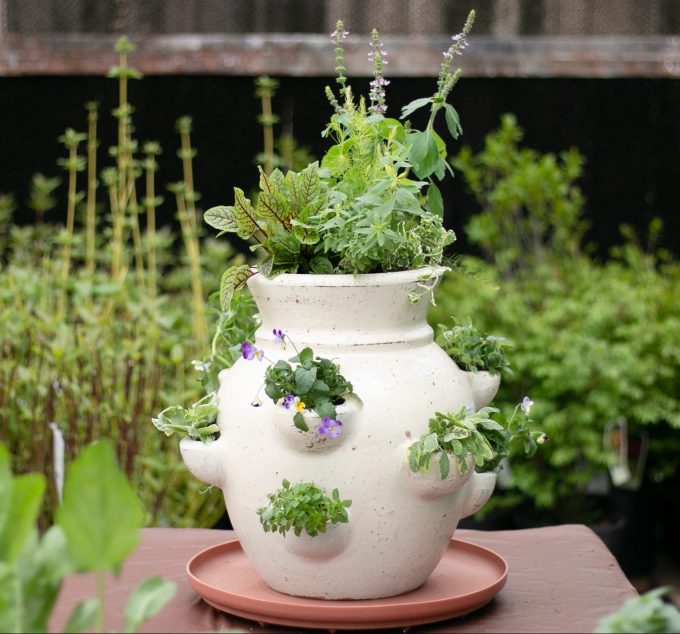I’ve always loved strawberry pots… the somewhat comical upright containers with lots of little pockets designed to hold draping strawberry plants and fruit. In fact, I love these specialized pots so much that I’m always looking for things to grow in them besides strawberries.
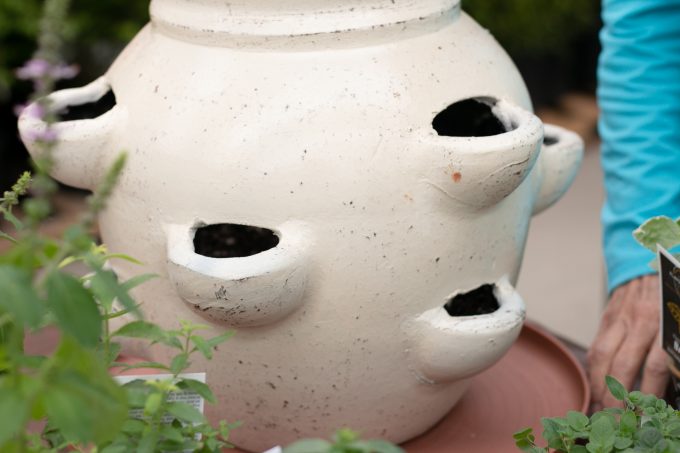
I’ve had good luck with other plants, including tiny succulents, especially moss rose, a.k.a portulaca. But why stop there? So as I was walking through Tagawa’s benches of beautiful herbs recently, I loaded up my cart with plants that might like, or at least tolerate life in a silly-looking but charming container.
Here’s what I did in case you’re tempted to follow suit. And big thanks to Meagan, Tagawa’s social media guru, for all of these great pics!
Selecting your herbs
Choose herbs that have similar needs for light and water. They don’t have to be identical, just fairly compatible. I’ve grown my herbs in the full, direct morning sun but only dappled afternoon shade and they’ve done just fine. Your overall “crop” from a strawberry pot may be huge, but you’ll still have plenty of herbs for cuttings. If you need a large and ongoing harvest of certain herbs, plant those by themselves in other more traditional containers.
Before you start planting, make sure your plants have been well-watered.
Strawberry pots usually have from three to nine pockets, plus a nice-sized opening at the top for a small grouping of plants.
Start by covering the hole at the bottom of the pot with a coffee filter to keep the soil in place but still allow for good drainage. Add enough soil to reach the bottom of the first level of openings.
It may be helpful to carefully remove some of the excess soil on plants with larger root systems to make the root ball fit better inside the pot. The root systems don’t have to sit upright. Angling the root ball a bit to make the foliage look its best is the goal.
With each pocket, never try to force the plant’s root system through the opening from the outside. The roots are the most important part of the plant to protect.
Instead, gently gather the foliage, then insert it carefully through the pocket from the inside of the pot outward. If you break a sprig or two the plant will quickly fill back in on its own.
As you plant and fill in each pocket, add more soil until you’re reached the bottom of the pockets on the next level. Repeat this process until you’re within six or so inches from the opening at the top.
Something to keep in mind
Before you plant that top opening, set some of the herbs you’re considering into the opening, still in their pots, to experiment with different designs. Vary things like the plants’ textures, their leaf shapes and sizes, colors, and possible flowers. Create a design that appeals to you and includes at least some plants that are more upright than many of the herbs or small flowers you’ve used in the openings on the sides.
A word of caution
Be very, very careful not to fill with plants and soil all the way to the rim of the pot. This rule applies to any container gardens you create. Always keep the finished soil level at least three inches below the rim of the pot so when you water, there’s a space to hold that water and let it slowly sink in. Otherwise, (and I’ve done this more times than I care to say,) the water will just spill over the sides of the over-planted pot and you’ll have to stand there with a hose and wait… and wait… to apply enough water to soak the soil all the way through.
Once you’re done planting, gently water the entire strawberry pot until you see water coming out the drainage hole at the bottom. Run a soft spray of water over the plants in the pockets, too, just to be sure.
After watering, don’t forget to check the plants in those little pockets to make sure the soil hasn’t settled and exposed any roots. If the soil has settled, just add a bit more until the roots are fully covered.
Some maintenance tips and tricks
Herbs generally don’t want or need fertilizer, but since these plants are growing in the confines of a crowded container, some low-strength plant food would be a good idea. Apply some Fish and Seaweed plant food or a dose of organic fertilizer at half-strength every week to ten days.
Don’t let your herb-filled strawberry pot turn into a jungle! Sharpen your pruners and lightly trim your herbs regularly! Keep the overall look pleasantly full but not chaotic! And have some fun in the process! If despite your steady trimming, an herb you’ve planted simply grows too big for the container, I’d suggest removing it, then cutting out its roots with a sharp serrated knife. Remove some of the soil and replace it with something new.
If any of you decide to create a strawberry herb pot of your own, please let us know! Post pictures on any of the Tagawa Gardens’ social media sites so we can celebrate your success!
